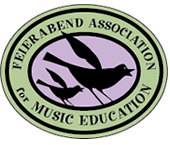Name: John Crever 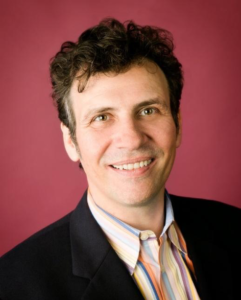
School District: FAME Endorsed Teacher Trainer
After over 20 years of teaching music in the classroom, I left because of significant challenges with my immune system, which kept me out of school more than I was in. This change has allowed me to focus on bringing training in the Feierabend curricula to teachers in underserved regions, opening doors to new opportunities, and making a real difference in student’s lives on a larger scale!
Before stepping back from the classroom, I had the incredible opportunity to teach in 16 different schools, kicking things off at an international school in far-off Abu Dhabi. There, I launched the K-12 music program at the American Community School, which continues to thrive using Dr. Feierabend’s innovative methods! After graduate school, I spent 22 rewarding years in NJ and NY, inspiring musicians at Cherry Hill, Rutgers Prep School, and Newark Public Schools. I even embraced a few shorter roles and enjoyed being a teaching artist in the vibrant area of New York City with the 92nd Street Y and the Third Street Music Settlement.
Since 2012, I’ve lived in Portland, Oregon, where I taught at Ivy Charter School until 2015. Now, in addition to spreading the message at every opportunity, I work for the FAME board, where I pour my heart into editing media and website publications. One of my proudest aspects at FAME is working with the teacher trainer committee to select and train passionate new trainers. I’m also thrilled about creating the online virtual certification courses! Every week, I teach students of all ages— from kindergarteners to adults— sharing the joy of traditional dances and music during Hebrew school at Congregation Neveh Shalom. I also proudly serve as the only FAME-endorsed trainer west of the Missouri River, leading professional development sessions in First Steps in Music and Conversational Solfege Levels 1-5. It’s a journey I cherish every day!
Grades Taught & Specialty Area (previously and currently):
- Pre-K-8 General Vocal Music
- MS/HS Choir
- AP music theory, counterpoint, and composition
- Theater pit orchestra and musical direction
- Circle Singing improvisation
- Voice
Educational History:
- Bachelor of Music (Music Education, Choral, Voice, and Piano) Westminster Choir College (1993)
- Master of Music (Music Education and Conducting) Westminster Choir College (1997)
- Additional private studies in counterpoint and orchestration with Lee Hoiby and composition at the Julliard School, as well as with John Feierabend.
Primary instrument in college: Voice and Conducting
How you came upon Dr. Feierabend’s materials & philosophy.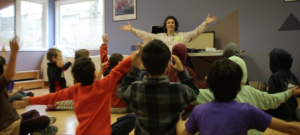
I attended Westminster Choir College, and to say that there was a strong Kodály influence is the education department is an understatement. Being a dedicated singer, I was enthusiastic about adopting a vocal approach to classroom music education. The perspective the Kodály lens gave me led me to a couple inspired mentors with whom I had the opportunity work under for several years. One particularly relevant to John Feierabend was Mary Szeles at Rutgers Prep School in Central New Jersey. Mary hired me to do middle school and high school choir because of our closely aligned philosophies. She would regularly attend many Kodály conferences and would bring me back books and videos. I would come in on Monday morning and find a new Feierabend book on my desk, which meant that I would possibly be asked for my feedback on it in the near future. She encouraged me to reconcile my differences with the Kodály approach by not spending time revisiting where I’d failed before, but by finding a new approach that I felt worked for me. She felt strongly that Feierabend (who was at the time President of OAKE) was the future of the Kodály approach in America.
After college I began following Edwin Gordon’s Music Learning Theory, trying to understand his tome Learning Sequences in Music and using the Gordon inspired curriculums Jump Right In. For several years I’d been modifying the Jump Right In materials to work with HS/MS choirs to teach musicianship skills. At the time I felt like Dr. Gordon had a more concrete idea of how to teach musical listening and responding through improvisation than what was offered in other popular music reading textbooks or in various Kodály programs.
Around the same time, I found myself moving away from high school choirs in search of what experiences a high school student needed before arriving at high school to sing in a competitive choir. I found myself traveling in the afternoons to teach 8th Grade choir, then 7th grade, then 6th grade until one day I arrived at school years later where I was handed a new schedule that contained four sections of Pre-K and four of Kindergarten music. Clueless, I took the plunge and quickly realized I had no idea what I was doing with lower elementary.
I expressed this to a good friend, Jennifer Elliott, who took me along to a local KodályNew Jersey talk given by Dr. Feierabend on his 8-part Musical Workout for Pre-schoolers and Beyond. It was an easy sell! Within 10 minutes Dr. Feierabend led a Move-it! and I was sold. To me, doing this beautiful activity was a new way of sharing and experiencing great music together, and that made all the sense in the world to me. I got First Steps in Music and Beyond and after that did the training in FSM and CS and the rest, as they say, is history.
What do you find to be the most powerful aspect of Dr. Feierabend’s philosophy for your teaching? 
I think the most powerful aspect of Dr. Feierabend’s philosophy in my own teaching was realizing that all people are musical and it’s our job as a music specialist to help every child find that musicality in themselves. For many years as a high school choral director, I combed the student population for who would be my next performer. Recruitment of students was key to survival in the high school choral world. My attention as a music specialist in the school focused only on a small part of the school population. John Feierabend gave me a vision that included everyone in my musical community.To satisfy my desire to do this, I dedicated my teaching solely to elementary music and worked to connect musically with each student everyday as they came through my music room.
How has FS/CS changed your teaching?
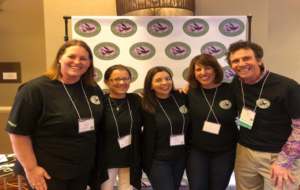 Thinking on the surface, using both FSM and CS pushed me to consider how I used my objectives at each step, and how the objective evolves over time to see the learner land at the intended outcome. I think there were other outcomes that were a little more difficult to recognize but were inarguably changes that occurred at the time. I realized that by building musical community, I was building a peaceful community in a very local way, simply by singing and dancing together. At the time I was working in an inner-city war-zone, as represented by the Independent Film Channel 8-part documentary “Brick City” filmed in the neighborhood when I was teaching there. I’m not in the film but was a school music teacher in this community locally. I was keeping my sanity, and the children safe, by singing and dancing. I realized that when the children were sitting still, it was like a ticking time bomb until one child would burst out aggressively against another. Years later I came to understand that this was the effect of the trauma in their lives. As a teacher, I sought solutions like FSM to help me survive until I could get on to a better teaching assignment. What I found was that by moving together, as a group, we were able to push-back against the neighborhood outside the music room, and in doing so, we wouldn’t let fear reduce us to violence as well.
Thinking on the surface, using both FSM and CS pushed me to consider how I used my objectives at each step, and how the objective evolves over time to see the learner land at the intended outcome. I think there were other outcomes that were a little more difficult to recognize but were inarguably changes that occurred at the time. I realized that by building musical community, I was building a peaceful community in a very local way, simply by singing and dancing together. At the time I was working in an inner-city war-zone, as represented by the Independent Film Channel 8-part documentary “Brick City” filmed in the neighborhood when I was teaching there. I’m not in the film but was a school music teacher in this community locally. I was keeping my sanity, and the children safe, by singing and dancing. I realized that when the children were sitting still, it was like a ticking time bomb until one child would burst out aggressively against another. Years later I came to understand that this was the effect of the trauma in their lives. As a teacher, I sought solutions like FSM to help me survive until I could get on to a better teaching assignment. What I found was that by moving together, as a group, we were able to push-back against the neighborhood outside the music room, and in doing so, we wouldn’t let fear reduce us to violence as well.
About seven times a day, I would quickly usher children out of the hallway, where anything could happen, and into my room, a safe spot. Over time, I saw that wherever I could get people singing and dancing, the more distracted and happier we would all be while we tried to create the same school experience that other children have in other school districts outside of dire poverty and urban blight. By applying Feierabend’s ideas about a Three-Dimensional Music Program and working to connect each child to the Art Part of the Music, I found I had built not just another program, but a community of musical people. After four years of this transition, as I listened around the school, I heard children singing during their day. In the cafeteria, I would see and hear evidence of an impromptu Arioso with a banana, on the playground I’d hear rhythmic hand clapping and singing as a natural part of their play. In the hall, I’d see a class standing in line, waiting to get into their room, and there’s a child leading a singing and movement activity, quietly, almost adulating, with their peers. The most powerful aspect played out for me in that the work I did each day added up to so much more because the students took ownership of their own music making, probably for the rest for their lives.
How has FS/CS changed your students?
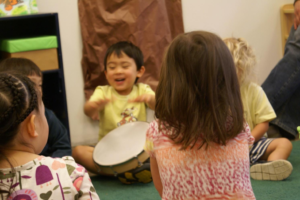 I’ve always listened to what former students have said to me, I still chat with many who are now in their 30s with children of their own. The older students would never know me as the First Steps teacher. What the older students would notice is the skill and fluidity with which we moved through continuous activities. I credit the Feierabend approach to music education for the knowledge to know what to do (TBA) and the strategy to make the vision a reality (FSM & CS). They would find regular group dancing, musical movement play, less accompanied singing and space in the lesson to explore and grow vocally by soloing. My hope is that the older students would walk away with a noticeable sense that we were building regularly and continuously on the previous knowledge and skills that show growth to the observer.
I’ve always listened to what former students have said to me, I still chat with many who are now in their 30s with children of their own. The older students would never know me as the First Steps teacher. What the older students would notice is the skill and fluidity with which we moved through continuous activities. I credit the Feierabend approach to music education for the knowledge to know what to do (TBA) and the strategy to make the vision a reality (FSM & CS). They would find regular group dancing, musical movement play, less accompanied singing and space in the lesson to explore and grow vocally by soloing. My hope is that the older students would walk away with a noticeable sense that we were building regularly and continuously on the previous knowledge and skills that show growth to the observer.
 Over time, colleagues noticed that wherever there was singing and moving together, there was no aggression. It seems like a no-brainer, singing makes people feel good about themselves and about each other. Humans have used music as a soothing, coping mechanism for children probably before there was even language. Today, as music teachers, we may be the only musical persons in a child’s life and we have the power to give this gift of music to every person who comes through our musical doors.
Over time, colleagues noticed that wherever there was singing and moving together, there was no aggression. It seems like a no-brainer, singing makes people feel good about themselves and about each other. Humans have used music as a soothing, coping mechanism for children probably before there was even language. Today, as music teachers, we may be the only musical persons in a child’s life and we have the power to give this gift of music to every person who comes through our musical doors.
What would you say to encourage a teacher just starting out with John’s materials? And/or, how would you encourage a teacher who has used the materials for a while, but may be overwhelmed?
For someone who is just starting out with First Steps in Music or Conversational Solfege, get additional training. It will all be so much clearer and manageable after additional professional development. In the meantime, before trying FSM with children, practice at home with some of the items, and think through the presentation and your objectives and long-range purpose of using the activity or song.
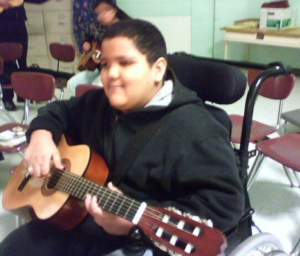 For anyone who might be having difficulty teaching Conversational Solfege, I always recommended getting the training. I tried doing it without training myself. It made so much more sense after I sat in the training. Having worked in so many different types of schools and locations, I’ve come to realize that I have been incredibly fortunate to have experienced so many different points of view and have been able to study with so many ‘greats’ in the music and education world. Not everyone can take time off to go and study and broaden their understanding of pedagogy. I work now to bring the Feierabend curricula and approach closer to educators, making it accessible to those who want it.
For anyone who might be having difficulty teaching Conversational Solfege, I always recommended getting the training. I tried doing it without training myself. It made so much more sense after I sat in the training. Having worked in so many different types of schools and locations, I’ve come to realize that I have been incredibly fortunate to have experienced so many different points of view and have been able to study with so many ‘greats’ in the music and education world. Not everyone can take time off to go and study and broaden their understanding of pedagogy. I work now to bring the Feierabend curricula and approach closer to educators, making it accessible to those who want it.
Bio:
John Crever is a driven educator with over 30 years of experience in music coaching, instruction, production, management, and community organizing. His ability to connect with students and teachers of diverse socio-economic and cultural backgrounds has enabled him to successfully teach general music and choir in communities ranging from those ravaged by urban blight to suburban private settings to overseas students in the international school system in the Arabian Gulf. He has carried his love of Kodály education from Westminster Choir College (’93, ’97) to these diverse venues. Most recently, he has been championing district curriculum adoption of Feierabend Certification courses.
John Crever began transitioning from a Music Learning Theory (MLT-Gordon)/Kodály to the Feierabend philosophy in 2006, bringing joy and satisfaction to him and countless students in the inner city and beyond. In addition to his classroom work, he is an Endorsed Teacher Trainer for Conversational Solfege and First Steps in Music. He leads workshops and certification courses, bringing the Feierabend curricula and pedagogy closer to where teachers teach. John hopes to help teachers share their love of music through active learning with song and movement. John lives in Portland, Oregon, with his wife and three girls, and he plots his TBA takeover of the western states.
FAME Member Since:
2012 (I was the Founding Member who attended via Skype!)
Classes/Workshops you’ve attended in First Steps or Conversational Solfege
I’m a die-hard Feier-Fan! Not only do I own multiple copies of all the books, videos, CDs, and wearable merchandise, but I’ve also attended many classes, workshops, and conferences around the country led by Dr. Feierabend. I’ve also attended and presented at five FAME conferences. John Feierabend inspired my teaching so much that now I work as a FAME-endorsed Teacher Trainer to give more teachers access to the Feierabend approach to music education. I’m available for professional development sessions. Reach out, and we can make a plan for your subsequent professional development in the Feierabend Approach to Music Education. John Crever is doing business as Music-Ade, LLC, www.music-ade.com.
